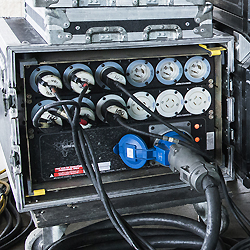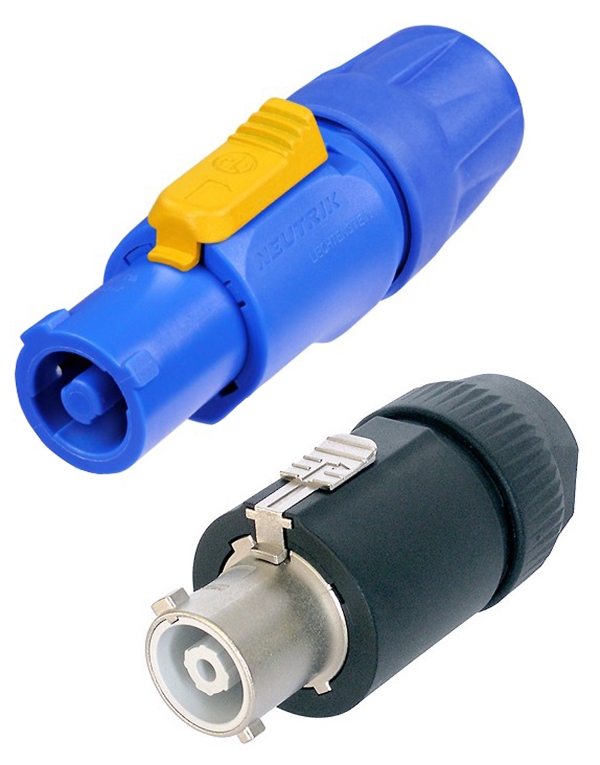
Plug Configurations
Speaking of extension cords, there are a variety of portable power cables used in show business, normally described by their connector type.
The most common is a 15-amp Edison (a.k.a., Parallel Blade and Ground PBG or House Plug) cable that will work with standard home outlets. A 20-amp version of this connector rotates one of the blades 90 degrees, so it will not fit standard 15-amp wall outlets.
Twist Lock (a.k.a., Twist or Locking) connectors require the user to insert and turn the connector to mate it correctly. Tabbed ends on some of the blades make it impossible to pull the connector straight out without being turned, while different size and spaced blades keep the various types from mating.
As with straight-bladed connectors, Twist Locks are available in a variety of sizes and amperage ratings from 15-amp single hot wire models up to 30-amp/5-pin (three Hots, Neutral and Ground) connectors.
To identify the various plug configurations, we use designations from the National Electrical Manufacturers Association (NEMA). A standard Edison plug is correctly called a NEMA 5-15. One Twist Lock common in convention centers is the L21-30, which provides three circuits of 30 amps each. Other common Twist Locks are the L14-20 and L14-30 that provide two circuits of 20 and 30 amps, respectively.
Stage Pin (a.k.a., Grounded Pin) connectors are available in a variety of sizes based on their amperage rating, with 20-, 60- and 100-amp sizes being the most common. These are mostly used by lighting companies, but the larger sizes have audio applications, such as feeding portable break-out distribution (distro) boxes.
IEC cables (a.k.a., computer cables) are common power cords on the back of powered loudspeakers and electronics. Newer IEC cables may also include a locking mechanism. Neutrik invented the powerCON locking power connector, similar in style to the company’s speakON connector but keyed differently so they will not mate. These are available in 20- and 32-amp models and have become quite popular as equipment power cords and stage box “stringer” connectors for stage power.
A stringer is a specialty cable that has outlets spaced along its length. These see heavy use by sound providers because a single cable can be run upstage of the band for backline power. Stringers can be single circuit types, where all outlets are on the same circuit, or can offer two or three circuits along the same cable. Most multi-circuit cables will use different color receptacles to identify what circuit an outlet is connected to, usually black for Load 1 (L1), red for Load 2 (L2), and Blue for Load 3 (L3).
The makeup of the cable in a “cordset” (a fancy name for an extension cord) is just as important as the connector. The NEC has something to say about portable power cords regarding their use in theater-type buildings. Article 520.68 states: “Flexible conductors, including cable extension, used to supply portable stage equipment shall be listed extra-hard usage cords or cables.” It also goes on to state that hard-usage cords can be used on stand lights in locations where the cable is not subject to physical damage.
Regarding fairs and similar events like outdoor concerts, article 525.20 states: “Where flexible cords or cables are used, they shall be listed for extra-hard usage. Where flexible cords or cables are used and not subject to physical damage, they shall be permitted to be listed for hard usage. Where used outdoors, flexible cords and cables shall also be listed for wet locations and shall be sunlight resistant.”
By the way, use only 12 AWG extension cords at gigs. Voltage drop occurs when running longer power cords, and this effect is more pronounced the longer the cable, and the smaller the wire gauge.


